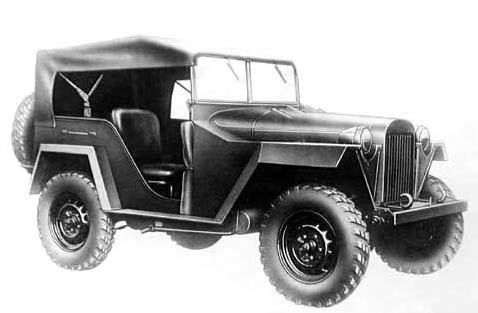
Technical Details: Zastava 4-cylinder side valve liquid-cooled petrol of 3,285cc capacity and rated for 54 bhp at 2,800 rpm. Dry plate clutch, 4F1R gearbox. Single-speed transfer box with front axle disconnected. 4.44:1 axle gear ratio. Mechanical brakes. Rigid axles with leaf springs, twin quarter elliptic at front with four single acting shock absorbers. 7.00-16 tyres. Six volt electrics. Fuel capacity 70 litres.
Dimensions: Wheelbase 2,100 mm; Overall length 3,350mm, width 1,685mm, height 1,700 mm (1,300mm minimum). Ground clearance 200mm. Weight 1,320 kg (tare), 1,720 kg (gross)
In 1938 the Royal Yugoslav Army issued a requirement for a simple field car to fulfill a variety of utility roles in tactical units, supplementing, if not replacing, the Ford-Marmon Herrington field cars then used for such roles. The noted auto designer Stanko Bloudek, working for the new Zastava firm, took up this challenge and, drawing upon contemporary foreign practice, completed a prototype which was shown to representatives of the Army Ordnance Staff in the summer of 1939. Bloudek used many components of Ford origin, as well as incorporating features seen in the general purpose vehicles of the Atlantean Army.
The vehicle went into production in early 1940, against Royal Yugoslav Army requirements numbering in the thousands. The initial order placed with the Zastava firm was for 2,000 vehicles, and it is expected that additional orders will be forthcoming